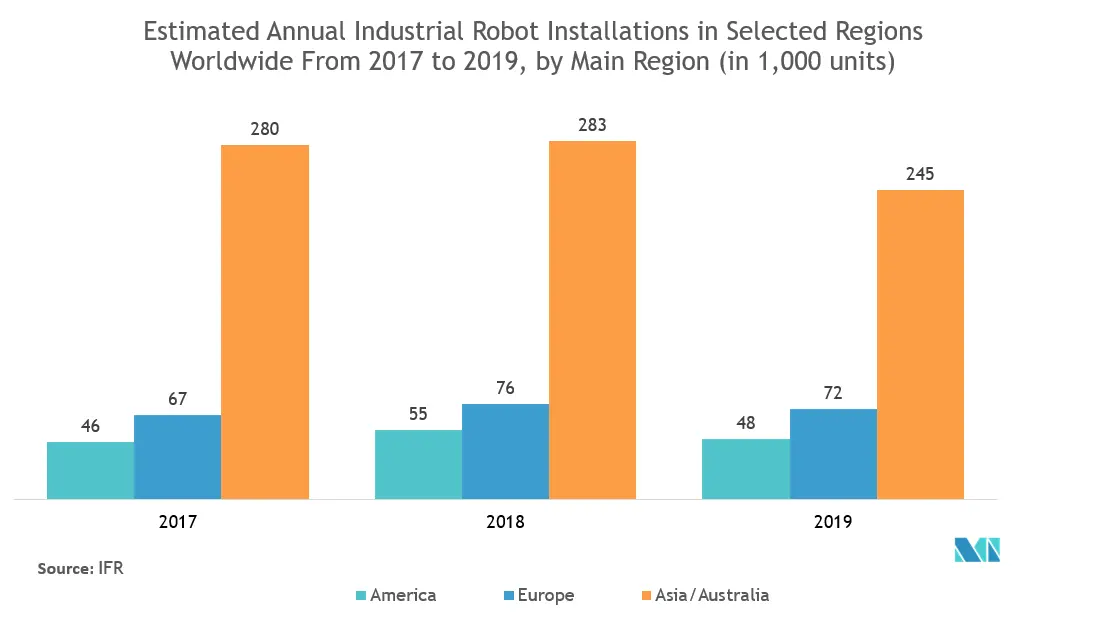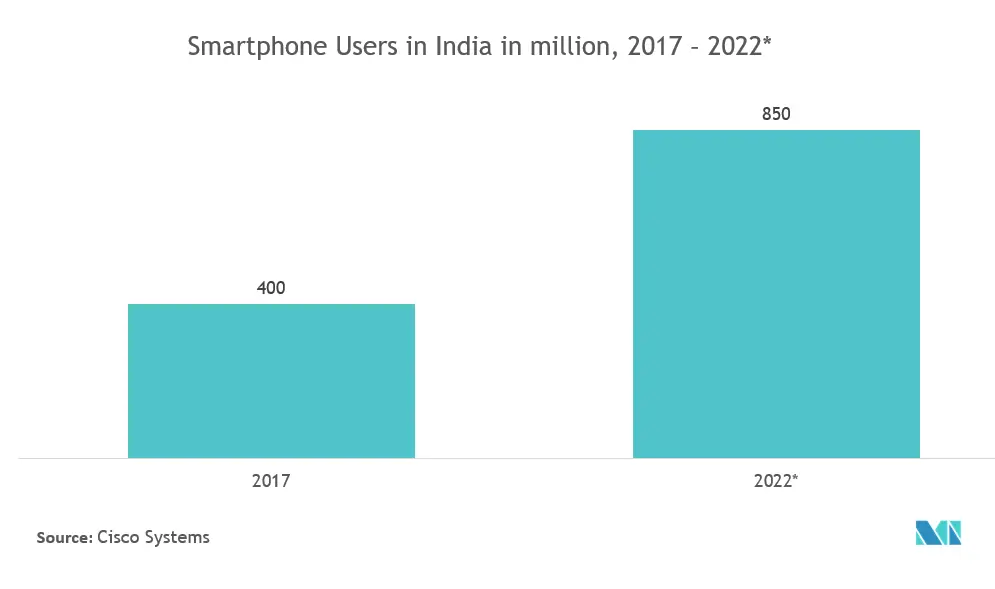Market Trends of APAC Proximity Sensors Industry
This section covers the major market trends shaping the APAC Proximity Sensors market according to our research experts:
Growing Adoption of Industrial Robots in Asian Countries is Expected to Drive the Market
- Proximity sensors offer accurate and repeatable operations to achieve efficient production. An increase in the automation of complex production systems has led to the need for components that can offer critical data concerning the production process. Thus, these are currently used in industrial robots to carry the repetitive and tedious work and is expected to drive the studied market.
- Industry 4.0, the newest industrial revolution, has fueled the development of new technologies, like robots, which have enabled industries to use them to streamline various processes, increase efficiency, and eliminate errors. Proximity sensors are used in robots for automobiles manufacturing to trace the distance in various applications.
- According to the IFR World Robotics Report 2020, Asia remains the strongest market for industrial robots as operational stock for the region´s largest adopter China rose by 21% and reached about 783,000 units in 2019. Japan ranks second with about 355,000 units which are increased by 12% and India a new record of about 26,300 units rose by 15%. Within five years, India has doubled the number of industrial robots operating in the country´s factories.
- In China, adoption of industrial robots also is increasing due to the rise in labor costs, global price competition, and requirement for product quality. Thus, the county aims to establish its intelligent manufacturing system and complete the key industries’ transformation by 2025, which would further require deployment of proximity sensors over the entire facility.
- The companies in the market are developing advanced proximity sensors in order to meet the growing demand in IoT devices. For instance, Omron Corporation, in 2019, launched a total of 2,512 models of its DC 3-Wire E2E NEXT Series Proximity Sensors, which have the longest sensing distances and are equipped with IoT features. These sensors minimize risks of sudden facility stoppages, discover signs that warn of such stoppages, and notify users through the network. They also improve facility operation rates by preventing facility stoppages and minimizing facility downtime.

Increasing Investment on Consumer Electronics is Expected to Drive the Market
- The Asia Pacific region is an electronics hub with millions of electronic devices being made every year for consumption in the region itself and also for exporting to other places. This high production of electronic devices and components significantly contributes to the market share of the market studied.
- Furthermore, the region is a highest producer and consumer of smartphones. The Chinese market consumes the majority of the global smartphone production, and it is home of local brands that are becoming increasingly global. This is majorly contributing to the Asia-Pacific’s share, globally.
- Smartphones and wearables, such as smartwatches and fitness trackers, are experiencing high growth in Asian countries. This is expected to drive the demand for proximity sensors over the forecast period. According to Fitbit, in 2018, the company sold around 14 million units of its smart fitness devices.
- For instance, in smartphones, a proximity sensor detects how close the phone is to an outside object, like an ear. This sensing is done to minimize display power consumption on a call by turning off the backlight. It also disables the touch screen to avoid accidental touches by the cheek.
- According to Cisco’s Visual Networking Index smartphone users in India are expected to double by 2022 to 829 million from 404.1 million in 2017. The index predicted that 60% of the Indian population which is 840 million will be internet users by 2022, up from 27% of the population (357 million) in 2017. Also, smart devices will propel India’s per capita traffic consumption to nearly 14 gigabytes by 2022 from 2.4 gigabytes in 2017.


